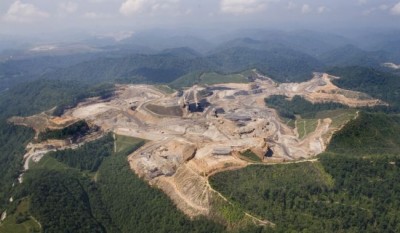After close of business on Friday, Oct. 30, Interior Secretary Ken Salazar surrendered to coal mine operators who are rapidly destroying the central Appalachian Mountains. Interior’s capitulation was filed by the Obama administration in federal court in papers that reveal the Department will further delay its promise to rescind the Bush administration’s gutting of crucial surface mining regulations in effect since 1983.
When we voted for change in November of 2008, environmentalists rallied to a standard. We didn’t realize that it was a white flag.
Evisceration of the “buffer zone rule,” was the Bush administration’s December 2008 parting gift to the coal industry. Until then, that rule prohibited mining within 100 feet of larger streams if it would harm water quality, quantity, or other environmental resources of the stream. Because the rule was unequivocal, coal operators and the Bush Department of Interior realized that it had to be changed to legalize mountaintop removal in Appalachia.
Mountaintop removal mining is so destructive that it necessitates removal of streams on mine sites or their burial beneath “valley fills” composed of millions of tons of mining waste. The harm wrought is unprecedented; mountaintop removal has permanently destroyed nearly two thousand miles of streams in the region. In the headwaters of the Spruce Fork watershed in West Virginia (which then-candidate Obama remarked on during the 2008 campaign as very pretty country), permits for surface mining and valley fills cover 35.5 percent of total stream length.
To allow mountaintop removal mining to continue, the 2008 Bush buffer zone rule exempted valley fills from the rule’s protection. This codified the mining industry’s long-held and absurd argument that, despite clear language to the contrary, the 1983 rule did not prevent the worst harms inflicted by mining and only addressed minor environmental impacts.
As far back as 1999, a federal judge in West Virginia recognized that interpreting the buffer zone rule to allow streams to be buried by mining waste leads to “the reductio ad absurdum that miles of streams could be filled and deeply covered with rock and dirt [so long as] some stretch of water downstream of the fill remain[ed] undiminished and unsullied.” Chief U.S. District Judge Charles H. Haden II pointed out the obvious: “No effect on related environmental values is more adverse than obliteration. Under a valley fill, the water quantity of the stream becomes zero. Because there is no stream, there is no water quality.” The Clinton Administration agreed with Judge Haden that the buffer zone applied to valley fills.
Shortly after the Bush rule change, citizens groups challenged it in court. In April 2009, Secretary Salazar asked the court to vacate the rule. While that request was denied last August, the Department of the Interior should never have wasted its time in court. With its own rulemaking ability, the Department should simply have created new regulations.
Remarkably, on Oct. 30, the Interior Department announced that it would not propose new language for several years to replace the Bush rule, despite conceding in court that that the current regulation is illegal. While Interior inexplicably drags its feet, the Administration would do well to immediately propose the 1983 rule and issue guidance announcing that it will enforce regulations as the Clinton administration interpreted them until Interior’s new rules are in place.
Interior’s delaying tactics are especially troubling in light of their other problematic actions regarding mining. Secretary Salazar proposed Joseph Pizarchik — director of Pennsylvania’s Bureau of Mining and Reclamation — to run the federal Office of Surface Mining, regardless of intense opposition from environmental groups. Despite Secretary Salazar’s assertion that Pizarchik will approach surface mining in an environmentally responsible way, Senator Menendez of New Jersey observed that overwhelmingly negative feedback from Pennsylvania’s citizens forced him to conclude that Pizarchik is unwilling “to look at these issues with a fresh eye.”
Unbelievable but true: nearly a year into this administration, the Department of Interior has taken no steps to curb the abuses of mountaintop removal mining. Interior has the duty under the Surface Mining Act to enforce regulations and punish violations, yet so far, its actions are indistinguishable from those of the Bush Administration. The Department has abdicated its responsibilities, forcing the EPA to act alone to challenge illegal and destructive mountaintop removal mining. There are more than 100 permit applications pending that would destroy tens of thousands of acres of forests and hundreds of miles of streams. There are at least that many permits in force for companies currently mining. EPA is in the process of reviewing 79 permit applications right now. And the Department of the Interior waits … for what?
It is time for Secretary Salazar to abandon the harmful policies of the Bush era and work with EPA to insure that we move forward under a banner of progress, not a flag of surrender.



